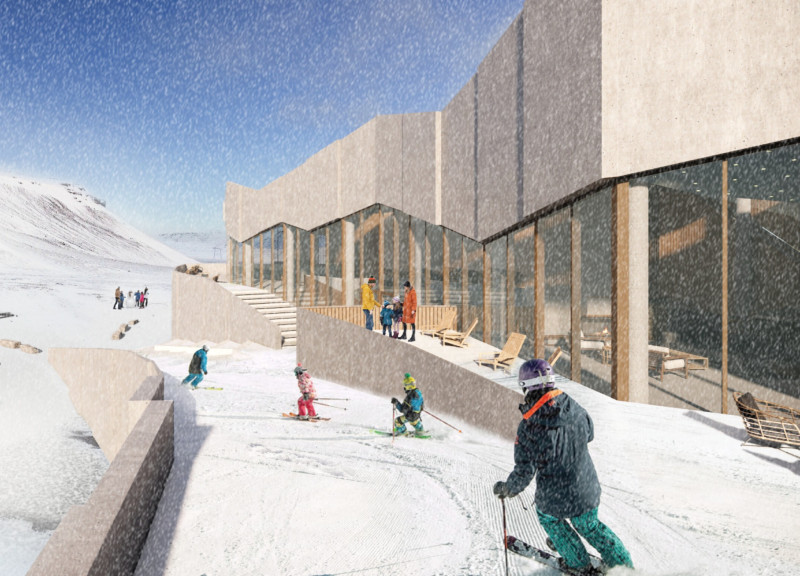5 key facts about this project
The primary function of the building is to serve as a multifaceted space, accommodating various activities while fostering interaction and collaboration. This is achieved through an open floor plan that encourages fluid movement throughout the building. The design prioritizes accessibility, ensuring that the interiors are navigable for all users. This emphasis on inclusivity is a key element in the architectural design, reflecting a growing trend in modern architecture to cater to diverse populations.
The façade of the project is particularly noteworthy, employing a combination of materials that enhances both aesthetics and performance. A blend of glass, steel, and locally sourced timber is utilized, creating a dynamic interplay between transparency and solidity. Large glass panels allow for natural light to flood the interiors, reducing the need for artificial lighting during the day. The use of timber not only adds warmth to the design but also connects the structure to its natural surroundings, promoting a sense of harmony between the built environment and nature.
One of the unique design approaches taken in this project is the incorporation of green roofs and vertical gardens. These features serve a dual purpose; they enhance the building's energy efficiency by providing insulation and reducing heat absorption while also promoting biodiversity in an urban context. This biophilic aspect of the design speaks to a broader trend in architecture that seeks to bring nature back into urban environments. The integration of sustainable practices is further reflected in the selection of eco-friendly materials and energy-efficient systems, aligning the project with contemporary environmental standards.
Important details within the project include thoughtful landscaping that complements the architectural design. Outdoor spaces are designed not just for aesthetic appeal but also as functional areas for gatherings and events. Pathways are carefully planned to guide visitors through the landscape, encouraging exploration and engagement with the environment.
The interior spaces are designed with flexibility in mind. Movable partitions allow for the reconfiguration of rooms as needed, enabling the space to adapt to a variety of uses. This adaptability is crucial for meeting the changing demands of its occupants. The design also emphasizes acoustics, with innovative materials used to minimize noise pollution, fostering a peaceful atmosphere conducive to productivity.
In terms of architectural ideas, the project pushes boundaries by challenging preconceived notions of space and usage. The strategic placement of communal areas encourages social interaction, while private nooks provide necessary respite, acknowledging the balance between collaboration and solitude. These design decisions reflect a deeper understanding of human behavior within shared spaces.
Through the thoughtful integration of innovative materials, sustainability, and user-centric design, this project exemplifies a modern architectural philosophy that emphasizes care for the environment and the community. The result is a building that is not only a structural entity but a vibrant component of the urban landscape, enhancing the quality of life for its inhabitants.
For those interested in delving deeper into the project's architectural plans, sections, and overall design, further exploration of the presentation will provide invaluable insights into the creative processes and considerations that shaped this remarkable endeavor.


























